

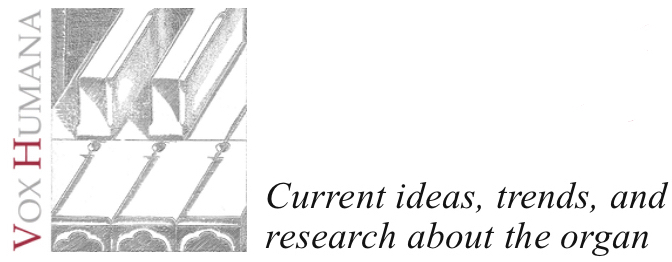
April 5, 2020
JUGET, SINCLAIR, & CÔTÉ
–––––––––––––––––––––––––––
Historically-Informed Organbuilding in Canada
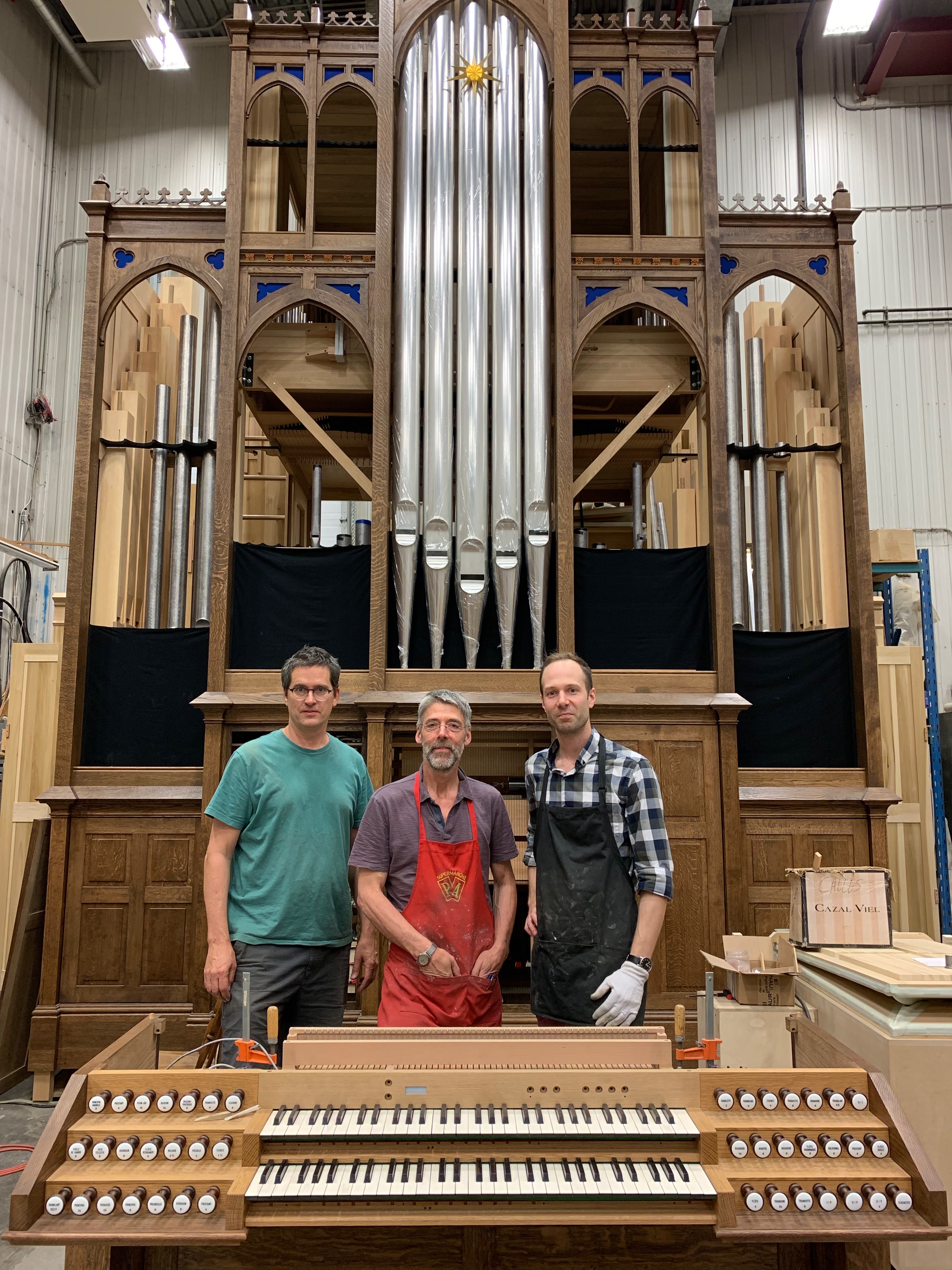
April 5, 2020
JUGET, SINCLAIR, & CÔTÉ
–––––––––––––––––––––––––––
Historically-Informed Organbuilding in Canada

Stephen Sinclair, Denis Juget, and Robin Côté in front of opus 51 (in progress, for Christ Church in Pelham, New York) at their workshop in Montréal, Canada.
Stephen Sinclair, Denis Juget, and Robin Côté in front of opus 51 (in progress, for Christ Church in Pelham, New York) at their workshop in Montréal, Canada.
Introduction
Founded in 1994, the Montreal-based organbuilder Juget-Sinclair specializes in mechanical action and French symphonic instruments. Vox Humana Associate Editor Nicholas Capozzoli sits down with three business partners (past and present) — Stephen Sinclair, Denis Juget, and Robin Côté — to discuss their backgrounds, the uniqueness of their instruments, and their views on organbuilding in North America.
––––––––––––––––––––––––
Denis Juget, Founder and Former President
Denis, thank you for agreeing to this interview. To begin, please tell us about your background as an organbuilder. How did this career lead you to establish your own firm?
As a teenager, I had organ lessons every Saturday in the town of Annemasse, France. After one lesson, my teacher brought me to a local organ builder. Prior to this, I only had an interest in the music – not at all what was underneath the keyboard or behind the console. It was fantastic to understand that there was something mechanical behind the organ and pipes. At 15, it was time to decide what to do for a career, and it was clear I was going to be an organ builder. There was no school for organbuilders in France at the time, so I first learned cabinetry. Then, I did an apprenticeship in Lyon under Lucien Simon, who once worked for the company Michel, Merklin & Khun of Lyon. He taught me basic organ maintenance, tuning, and of course how to build new instruments. Three years later, I moved to the south of France to work for a very small organbuilder where we mostly did restoration work. I then attended an International Society of Organbuilders convention in Toulouse where I met Hellmuth Wolff. He invited me to work for him in Canada (which was very convenient for my wife who is Canadian). Hellmuth also sent me to learn from his colleagues in Austria, Spain, Sweden, Germany, and Italy – it was fantastic. After my travels, I decided to stay in Canada. I also worked for Karl Wilhelm, but it was clear to me from the beginning that I eventually wanted my own shop. All along, I bought my own tools and precut wood from trees in my village. When I was ready to open shop, I had almost all of my own tools and wood. I’ve loved it ever since.
Out of all the locations in North America, why did you set up shop in a such a big (and expensive) city like Montréal?
I started in a small garage in Saint-Basile-le-Grand, a town just south of Montréal. At first, I built small instruments like practice organs and continuo instruments, but eventually I got more and more contracts. My colleague Stephen Sinclair joined as a partner, and we decided to move the company to Montréal. There was actually no business strategy behind this move – Steve and my wife are urban people, and I can set up shop anywhere I have my tools and pipes! That being said, there is less security because we don’t own our shop but rather rent it. Everything we have is on wheels, so the day we want to move, we pick up and go! However, we find Montréal to be a great location. It is a center of early music, is home to several conservatories, and of course has a long history of organ culture. We are fortunate to be so close to great musicians and academics. This has given us a lot of exposure – we’ve met many organ students who later became our customers!
Stephen Sinclair, Vice-President
As a builder of mostly French symphonic organs, I’d say your approach is quite unique in North America. What do you expect organists notice (or don’t notice) about your instruments?
We didn’t set out to be builders of French organs, and I think it’s only our core inspiration. We see the whole thing as pretty fluid. Actually, I think people see us as more French than we see ourselves. If you’re asked to build a historic instrument, that’s one thing; but when the request is more open-ended, you end up subconsciously expressing something of yourself. Organbuilders can play around with a variety of styles, and there’s also nothing wrong with building historic organs and taking them out of context. But what is important to us is that an instrument conveys a single conception. One way we do this is by uniform stop names. French is the language of our shop, and so every stop is labeled in that language (although this doesn’t necessarily mean the actual stop sounds French).
If we do our job well, everything we do that might be clever or novel is hidden, and all you see is an instrument that seems natural and easy. So, I guess we hope organists see the universal qualities of musicality, responsiveness, and flexibility.
Within the last several decades, more and more North American builders are interested in historical building practices. However, today’s churches and concert halls often compromise these techniques to suit contemporary taste and convenience. How do you respond to this challenge?
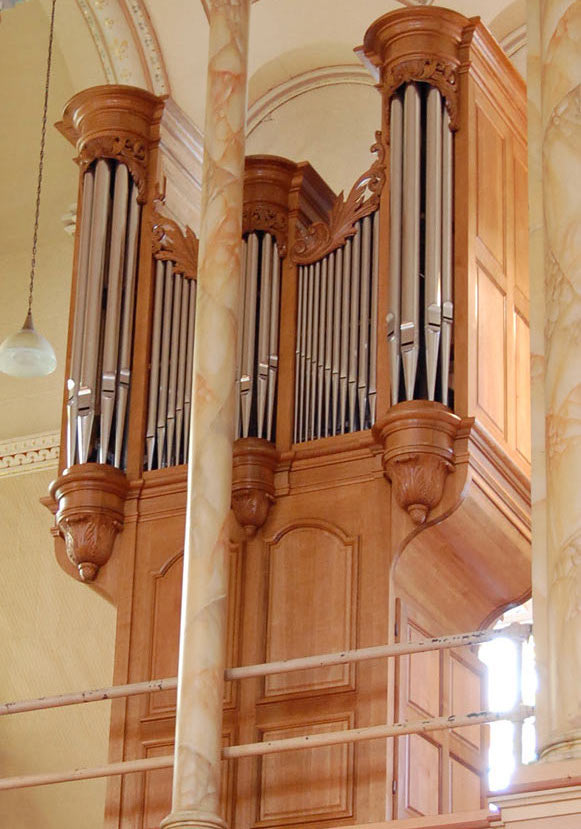
People often see historical and modern instruments as polar opposites, but really no instrument falls completely into one category or the other. They’re like two archetypes to which we aspire: the historical is informed only by the intellectual study of past practice, and the builder should completely remove themself from the process. On the other hand, the modern instrument should be an entirely creative process. But these are both impossible: there’s no way to remove your tastes, your culture, and yourself in the millions of micro-decisions it takes to design and voice an organ. And of course, modern instruments aren’t entirely creative either — we get small opportunities to be inventive, and we take them. We don’t see these things as great compromises, I think, being mindful that the archetype is not possible. The first philosophy is exemplified in our Quebec City instrument, an attempt to copy the interior construction of an eighteenth-century French organ.

Our instrument in Ithaca, New York is of the modern camp; it looks and sounds like a Cavaillé-Coll, but on the inside, it works like any other one of our organs. Regardless of the approach, what’s most important is that a builder starts with a clear statement of purpose.
Here is a video of the Juget-Sinclair organ in Ithaca:
César Franck: Chorale in E Major, performed by Jeffrey Snedeker on the 2016 Juget-Sinclair organ at St. Luke Lutheran Church in Ithaca, New York.
What is your approach in terms of action and design, and how is it unique?
I think the only way to answer this is to talk about what we aspire to and hope that we’re successful. Despite the complexity of organs, we try to keep the design as simple as possible. We’re willing to spend a lot of design time to make sure that we don’t miss out on a simpler solution. I imagine that, to other builders, our organs are quite unusual inside. There are a lot of things that you don’t see in other builders’ work (ex. opposing swell shutters, tensioned actions), so I guess we’re being pretty creative. We started out making everything in-house, and we still do, which results in a lot of change from instrument to instrument. Now, a lot of that has settled down, and our techniques are more established. Anyone who knows our work would recognize it in a second — it’s like we’ve been working in our own bubble.
Robin Côté, President
Robin, please tell us about your history with the firm. What attracted you to the organ and organbuilding?
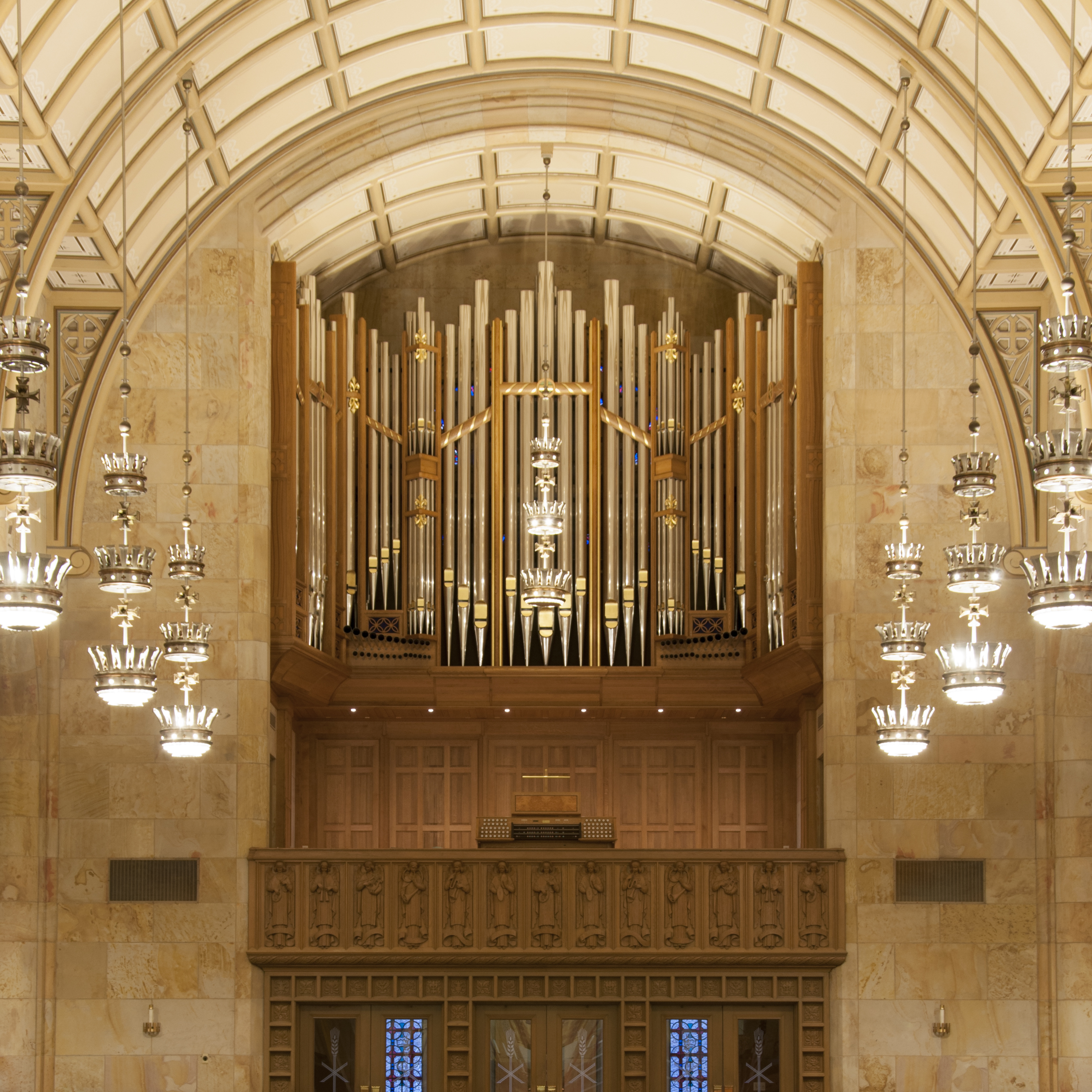
I grew up in a family where music was a central part. At the age of 9, I was selected to be part of the boys choir school affiliated with St. Joseph’s Oratory in Montréal. That was a paradise for the young boy I was: music theory, singing classes, piano lessons, concerts, and international tours. But the most important was how impressed I was facing Beckerath’s magnum opus at Mass. At the time, it was impossible to imagine that I would be deeply involved in the restoration of this instrument 20 years later! I was introduced to the organ by Raymond Daveluy who was the first to tell me that organs were still made today by artisans called “organbuilders.” The seed was planted. After taking organ lessons for nine years, I asked Denis and Steve if they would take me on as an apprentice in 2002. Since the beginning, it was clear to me that I wanted to pass by every stage of organbuilding with a strong leaning towards design and voicing. After ten years at the shop, and taking on more responsibilities, Denis asked me to join the company as a one-third part owner during the restoration of the Oratory’s Beckerath. I accepted, and we officially became partners in 2013 facing the challenge of our first 3-manual organ for the Christ the King Catholic Church in Dallas, Texas. Since then, I have been involved in all decisions. This past year, Denis passed me the torch as president, and he will continue to work with us. The transition was very smooth, as we always had a collaborative working method. After 17 years in organbuilding, I’m very enthusiastic about this new aspect of my work, and I’m especially proud of the development of our team.

Stephen has noted the uniqueness of Juget-Sinclair instruments compared to others in North America. Speaking from your experience as a voicer, are there any aspects of tonal design that distinguish Juget-Sinclair?
As Steve said previously, French organs are our core inspiration, but it can’t be seen as our sole ideal. Of course, we are deeply influenced by French organ culture, as we share a part of their history and language, but we have no interest in restricting ourselves to this style. Voicing is somewhat of a cultural commitment. Our North American reality favors diversity, allowing us to be free of the heavy weight of tradition that often restricts organbuilders.
I would qualify our voicing approach as creative and open-minded. This consists in focusing on the sound quality required in the instrument and the role it plays in the space. To achieve that, we adapt our voicing techniques to every situation. Sometimes, we will privilege a more classical approach and sometimes a more symphonic one. Our influences come from France as well as Germany and Canada. Recently, I have been studying some traditional practices more closely. One of them is the timbral impact of the tuning slot, which is not just a tuning device. Analyzing the harmonic spectrum in 92 different combinations from six pipes, the results show an amazing diversity of timbral effect. It was not a mystery before the tests, but I just wanted to explore the extremes to get a more complete overview. We started to use these traditional tuning slots in 2004–5 for a gamba, salicional, some principals, and even harmonic flutes in opus 24 (Wellesley, Massachusetts). The culmination was probably opus 42 (Dallas) and 45 (Ithaca) in 2015, where most of the pipework is voiced that way.
Our reeds are also not copied but carefully scaled to the room. Some of them are strongly influenced by the French practice, but many others are rooted in nineteenth- and twentieth-century Canadian or German practices. In the upcoming projects, we will have opportunities to add a few new reed stops to our palette. This is always a fascinating process, as we create sample pipes based on tradition and then modify them to fit our current practice. All of this is very technical, but for me, voicing is like painting: a refined combination of traditional and contemporary techniques. I’d say that our voicing practice favors contrast as well as homogeneity. Chiaroscuro is surely one of my favorite styles in painting, for you can find darkness and brightness passing through all the shades. A bit like mixing a Salicional and a Bourdon — two opposite timbres that are so velvety when mixed together.
Juget-Sinclair is increasingly busy building instruments throughout North America. Please tell us about your latest projects.
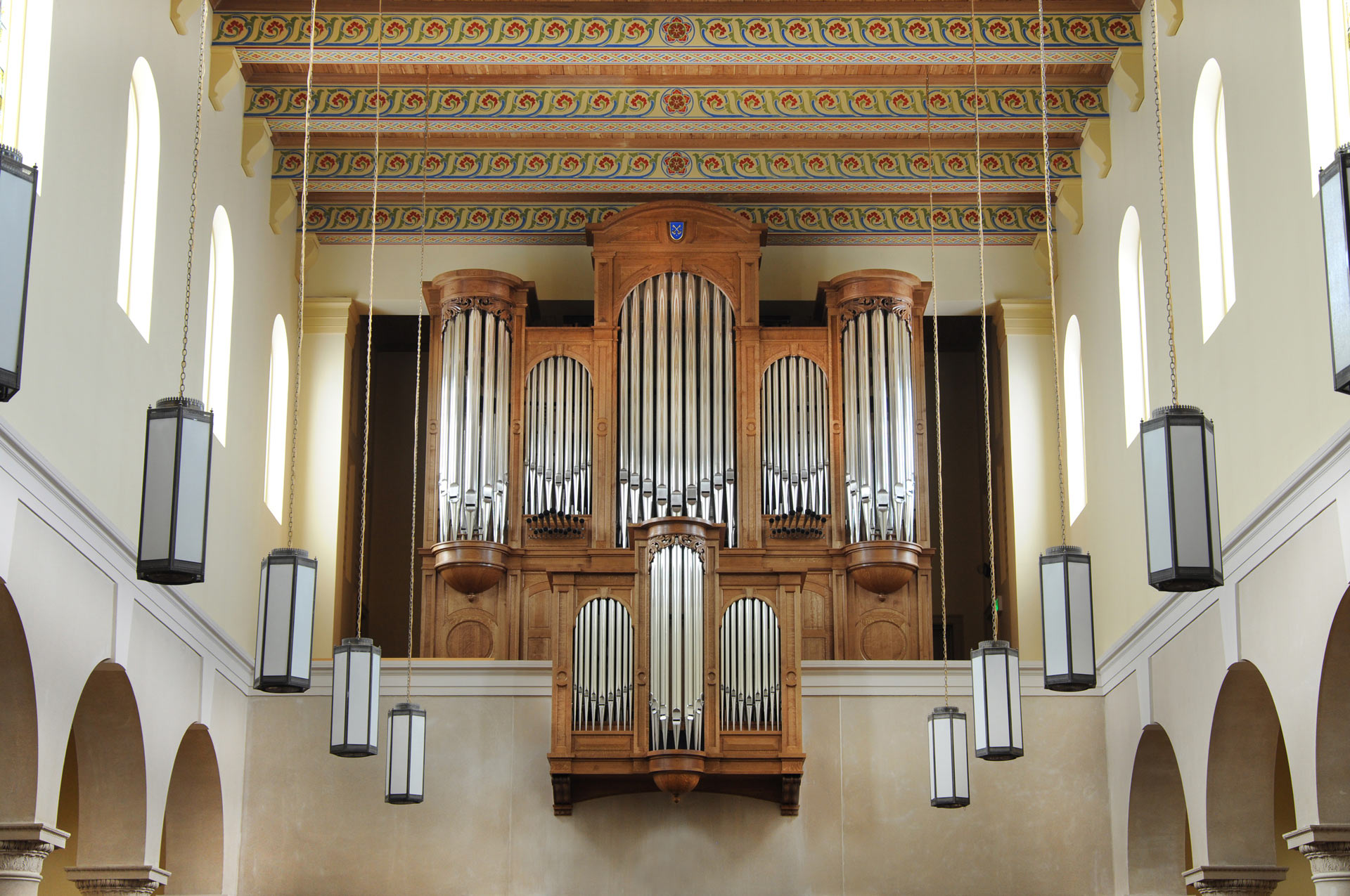
Our most recent church organ is a 42-stop, 3-manual organ installed in a Catholic seminary in Nebraska. It also includes our first positif de dos [Rückpositiv]. As they don’t use the organ to support congregational singing, we were asked to make a versatile instrument rooted in nineteenth-century French tradition. More recently completed is a 34-stop, two-manual for Christ Church in Pelham, New York with a completely different use. The plenum, pedal division, and general voicing will favor choral and congregational accompaniment. Our current project (Opus 52) will be a 41-stop, two-manual organ in a large Catholic parish in Wauwatosa, Wisconsin. We will introduce new colors in the instrument like a Pedal Violon 16’ and a new type of Clarinette 8’ in the Récit. Two fantastic projects for major Catholic Cathedrals will follow.

To conclude, here are several recordings of the Seminary organ:
The views and opinions expressed in this article are those of the author, and do not necessarily reflect the position of Vox Humana.